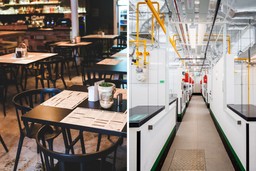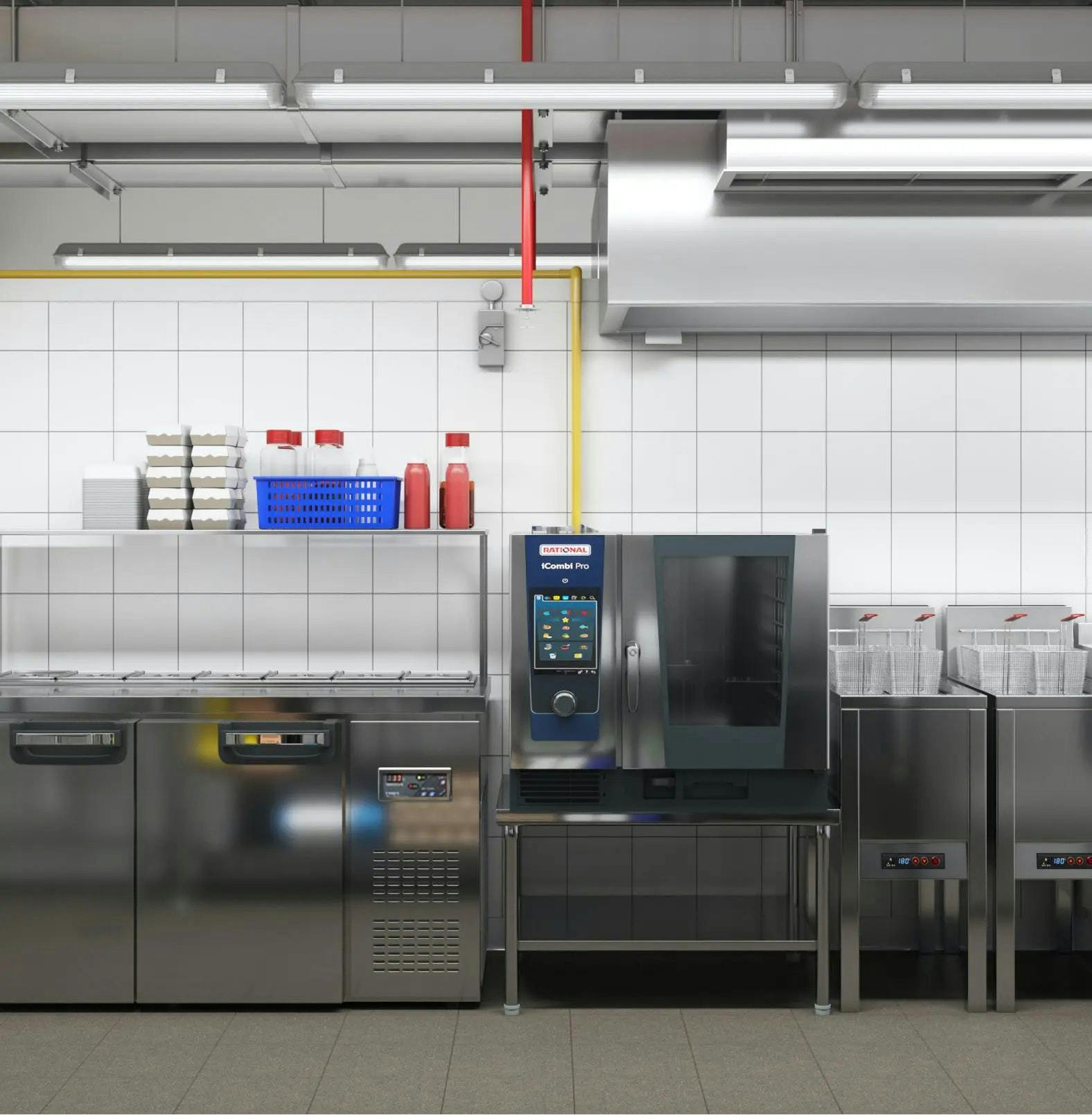Changes in the economic and social landscape bring about seismic shifts in every industry as they need to adapt to customers’ changing wants and needs. The F&B sector is not exempt from this and many eateries have undergone immense transformations in order to survive the devastating impact the pandemic has had. While many have flocked to find more cost-effective ways to run their businesses – one of the most utilised being CloudKitchen® delivery kitchens – others have stayed true to their roots and committed themselves to running traditional brick and mortar restaurants.
While there may be a significant difference of opinions within the F&B community about which one is better, how do you pick a side if you are on the fence or just entering the industry? Don’t fret as we at Smart City Kitchens are here to provide an in-depth analysis of CloudKitchen® delivery kitchens vs restaurants, so that you can ascertain which one best suits your business’s needs.
Location
This is an extremely important factor for a restaurant or CloudKitchen® delivery kitchen’s survival. No customers equates to no sales and profit.
Traditional restaurants
They have to be in a central location with plenty of foot traffic around as they need to draw customers into their physical location and have them try the food they serve. This can be incredibly difficult at times, especially if a lot of people are working from home. On top of that, they will have plenty of competition and have to find ways to offer something unique so that they stand out from the crowd.
Rents, staff costs, licences, permits, interior design, and a whole lot more will have to be looked after as you want your restaurant to look good and emit an inviting atmosphere that makes guests feel comfortable. Furthermore, the ambience and overall design needs to reflect the type of cuisine you are specialising in. For example, if you are running a Singaporean restaurant serving classics like Hainan chicken rice, your restaurant should be designed accordingly.
Cloud kitchens
Unlike restaurants, CloudKitchen® delivery kitchens are usually situated in facilities run by companies like Smart City Kitchens, which have plenty of locations throughout a specific country, like Singapore. With these facilities being in centrally-located areas with plenty of offices, schools and residential neighbourhoods nearby, businesses already have a massive customer base to target right off the bat.
CloudKitchen® delivery kitchens are also likely to have a wider reach than restaurants since their entire business model is built around delivery. Since many of them partner with multiple food delivery platforms, they can cast a wide net when it comes to the locations they deliver to.
Rent
When it comes to rent in the battle of CloudKitchen® delivery kitchens vs restaurants, this round goes to the former as they pay significantly less.
Traditional restaurants
Regular eateries have to fork out significantly more in rent as they need a bigger space and preferably one in a central location, as mentioned earlier. In Singapore, the average restaurant is 1,000 square feet in size and requires an investment of approximately S$200,000.
Cloud kitchens
Since a CloudKitchen® delivery kitchen consists of just a small kitchen space that is about 165 square feet on average, the cost is nowhere near that of a brick and mortar restaurant. In fact, it is only about S$10,000. With this in mind, it’s easy to see why newcomers to the F&B industry prefer this model as they don’t need to take a huge financial risk right from the get-go. Furthermore, many veteran restaurateurs looking to branch out to new markets use CloudKitchen® delivery kitchens to see if there is a lot of demand for their food before deciding whether to take the next step and open another retail location.
Employees
As expected, regular restaurants will require more staff since they have a bigger space and dine-in customers to look after. With this in mind, give another round to CloudKitchen® delivery kitchens in their head-to-head contest vs restaurants.
Traditional restaurants
Since they have customers dining in person at their premises, they will need a wide array of personnel, such as waiters, bartenders, general managers, etc. This obviously adds to the bill when it comes to employee costs. In addition to this, you have to invest some money in training them so that they uphold the standards that are expected from restaurants. In Singapore, brick and mortar establishments need about 10 employees in total, which can be incredibly costly, especially if businesses are trying to cut costs and navigate through tough times.
Cloud kitchens
Since CloudKitchen® delivery kitchens don’t have a dine-in area and predominantly operate a delivery-only business model, their staff costs don’t come near to that of normal restaurants. This is because they only need chefs to cook the food. As a result, they only need approximately two to three people to start with, but can hire more if there is a significant increase in the number of orders coming through every day.
Operational costs
Operational costs include ingredients, packaging, technology, and a whole lot more. Generally, brick and mortar establishments will incur higher costs in comparison to CloudKitchen® delivery kitchens.
Traditional restaurants
Regular restaurants will have to pay quite a lot for their ingredients, POS systems, menus, takeaway boxes, packaging, etc. This will increase even further if they offer more than one type of cuisine as they will have to order more supplies. Take into account the staff needed and the need for a professional website, which also falls under operational costs, and you can see just how much traditional restaurants will be paying.
Cloud kitchens
Since CloudKitchen® delivery kitchens have to prepare a lot of food for delivery orders, they too will need to spend a lot of money on ingredients. However, many of these kitchen space suppliers like Smart City Kitchens offer them state-of-the-art technology that streamlines their business process, whereby they can monitor all orders that come through on one tablet, regardless of how many food delivery companies they have partnered with. CloudKitchen® delivery kitchens also have a need for websites, which is another cost they will have to incur.
Set up cost
In the battle of getting prepped and set when it comes to CloudKitchen® delivery kitchens vs restaurants, it depends on how much equipment is needed to run the business effectively. However, CloudKitchen® delivery kitchens have the advantage of being able to hit the ground running faster than normal eateries.
Traditional restaurants
The type of cuisine being served and the number of people the restaurant can hold at full capacity will have a substantial impact on the amount of equipment needed to set up. Remember to take into account pots, pans, specialist equipment and the basics, such as plates and utensils. You will probably need to have extra stock sitting around in case plates get broken or any of the utensils get damaged. If your restaurant is a fine dining establishment, then you will have to purchase top-quality equipment that reflects the image and luxurious atmosphere of your business.
Cloud kitchens
The amount of equipment needed will depend on the number of orders that come in. However, there will be no need for plates and a lot of silverware as the food will be delivered. Therefore, CloudKitchen® delivery kitchens can save some money in this regard. It is also worth noting that just because you run a delivery-based business, it doesn’t mean you can forego the specialist equipment that may be needed to make certain types of dishes.
Profit
As the battle of CloudKitchen® delivery kitchens vs restaurants rages on, one of the key factors that will impact their survival is profit margins. Both types of business models offer plenty of profitability, so it’s up to you to decide which one best addresses the needs of your eatery.
Traditional restaurants
Since their overall costs outweigh that of CloudKitchen® delivery kitchens, normal restaurants may have to wait longer before they see any profits. In Singapore, the average waiting time to break even is about four years. This is quite a long time to wait and it also depends if you can keep your business running this long. That being said, there is no reason why your restaurant can’t open its doors and quickly become the talk of the town. If you are able to offer a unique experience or incredible food that can’t be found anywhere else, it’s likely that you will be well on your way to profitability in no time.
Cloud kitchens
With an already-established customer base, businesses operating out of CloudKitchen® delivery kitchens can try to disrupt the market and push to gain a bigger slice of the pie as time goes on. In general, CloudKitchen® delivery kitchens take around 6 months to break even as the investment needed to start one is not substantial. However, with plenty of diners placing orders every day, the possibilities are endless when it comes to how much money these types of businesses can rake in.
Marketing
When it comes to marketing for CloudKitchen® delivery kitchens vs restaurants, both have to work extremely hard to connect with their customers and build a rapport that earns them a loyal fanbase.
Traditional restaurants
The aim of the game for regular eateries is to attract more customers to their physical location. The more people that dine in, the more money they get and the higher their profits. In order to do this, they need to utilise the power of social media and post interesting content that grabs people’s attention and encourages them to learn more.
Partnering with influencers is another way to earn some clout as they can tell their massive fan base to try out what you have to offer. In addition to this, running promotions and discounts at different times of the year or with influencers is another surefire way to get people talking about your establishment and bring them through the door.
Cloud kitchens
All of the above applies to CloudKitchen® delivery kitchens as well, especially considering their entire business runs on getting orders online. They need to connect with their customers on a more personal level, so doing all the aforementioned steps will definitely earn them plenty of new customers and repeat business too.
Which one will you pick?
Having seen the differences when it comes to CloudKitchen® delivery kitchens vs restaurants, you have to make the ultimate decision in regards to which model best adheres to the requirements of your business. Interested in opening a CloudKitchen® delivery kitchen in Singapore? Fill out the form below or contact us today.

